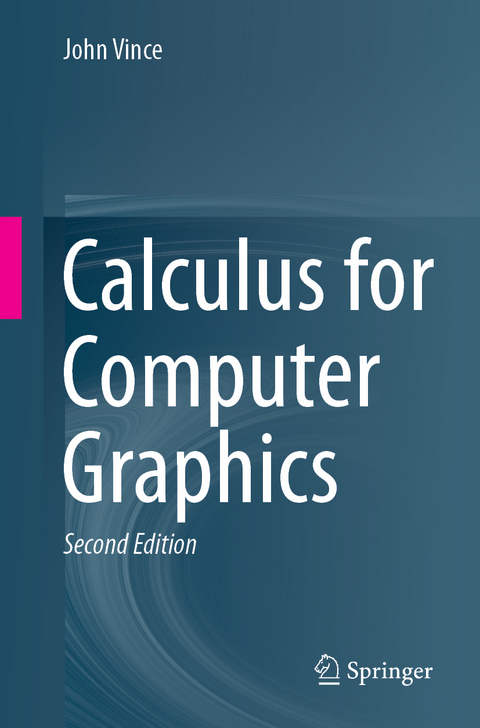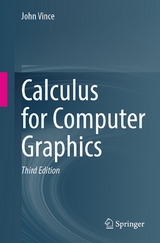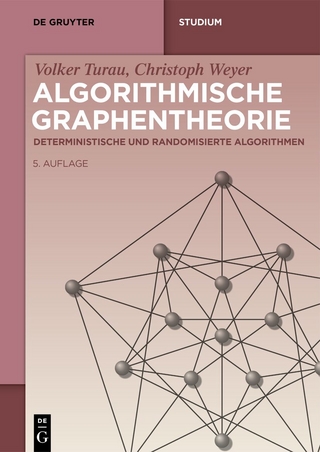
Calculus for Computer Graphics
Springer International Publishing (Verlag)
978-3-030-11375-9 (ISBN)
- Titel erscheint in neuer Auflage
- Artikel merken
Students studying different branches of computer graphics have to be familiar with geometry, matrices, vectors, rotation transforms, quaternions, curves and surfaces and as computer graphics software becomes increasingly sophisticated, calculus is also being used to resolve its associated problems.
In this 2nd edition, the author extends the scope of the original book to include applications of calculus in the areas of arc-length parameterisation of curves, geometric continuity, tangent and normal vectors, and curvature. The author draws upon his experience in teaching mathematics to undergraduates to make calculus appear no more challenging than any other branch of mathematics. He introduces the subject by examining how functions depend upon their independent variables, and then derives the appropriate mathematical underpinning and definitions. This gives rise to a function's derivative and its antiderivative, or integral. Using the idea of limits, the reader is introduced to derivatives and integrals of many common functions. Other chapters address higher-order derivatives, partial derivatives, Jacobians, vector-based functions, single, double and triple integrals, with numerous worked examples, and over a hundred and seventy colour illustrations.
This book complements the author's other books on mathematics for computer graphics, and assumes that the reader is familiar with everyday algebra, trigonometry, vectors and determinants. After studying this book, the reader should understand calculus and its application within the world of computer graphics, games and animation.
Professor John Vince began working in computer graphics at Middlesex Polytechnic in 1968. His research activities centered on computer animation software and resulted in the PICASO and PRISM animation systems. Whilst at Middlesex, he designed the UK's first MSc course in Computer Graphics and developed a popular program of short courses in computer animation for television designers. In 1986 he joined Rediffusion Simulation as a Research Consultant and worked on the development of real-time computer systems for commercial flight simulators. In 1992 he was appointed Chief Scientist of Thomson Training Simulation Ltd. In 1995 he was appointed Professor of Digital Media at the National Centre for Computer Animation at Bournemouth University and in 1999 he was made Head of Academic Group for Computer Animation. He was awarded a DSc by Brunel University in recognition of his work in computer graphics. He has written and edited over 40 books on computer graphics, computer animation and virtual reality, including the following Springer titles: - Mathematics for Computer Graphics (2014) - Calculus for Computer Graphics (2013) - Matrix Transforms for Computer Games and Animation (2012) - Expanding the Frontiers of Visual Analytics and Visualization (2012)
Introduction.- Functions.- Limits and Derivatives.- Derivatives and Antiderivatives.- Higher Derivatives.- Partial Derivatives.- Integral Calculus.- Area Under a Graph.- Are Length and Parameterisation of Curves.- Surface Area.- Volume.- Vector-Valued Functions.- Tangent and Normal Vectors.- Continuity.- Curvature.- Conclusion.
"The logic and content are presented very clearly. The colorful figures are also helpful when trying to understand the presented ideas. Readers can thoroughly understand the material by taking the book chapter by chapter from the beginning. Students can use the book's included equations and deductions as examples ... . Overall, I highly recommend this very useful reference for those who are studying or working in fields related to computer graphics." (Zhaoqiang Lai, Computing Reviews, October 1, 2019)
“The logic and content are presented very clearly. The colorful figures are also helpful when trying to understand the presented ideas. Readers can thoroughly understand the material by taking the book chapter by chapter from the beginning. Students can use the book’s included equations and deductions as examples … . Overall, I highly recommend this very useful reference for those who are studying or working in fields related to computer graphics.” (Zhaoqiang Lai, Computing Reviews, October 1, 2019)
| Erscheinungsdatum | 23.03.2019 |
|---|---|
| Zusatzinfo | XVII, 303 p. 179 illus., 178 illus. in color. |
| Verlagsort | Cham |
| Sprache | englisch |
| Maße | 155 x 235 mm |
| Gewicht | 498 g |
| Themenwelt | Mathematik / Informatik ► Informatik ► Software Entwicklung |
| Mathematik / Informatik ► Informatik ► Theorie / Studium | |
| Mathematik / Informatik ► Mathematik ► Angewandte Mathematik | |
| Schlagworte | Calculus for Computer Animation • Calculus for Computer Games • Derivatives and Antiderivatives • Exponential Functions • Logarithmic Functions • partial derivatives • Polynomial Functions • Trigonometric Functions • Vector fields |
| ISBN-10 | 3-030-11375-2 / 3030113752 |
| ISBN-13 | 978-3-030-11375-9 / 9783030113759 |
| Zustand | Neuware |
| Informationen gemäß Produktsicherheitsverordnung (GPSR) | |
| Haben Sie eine Frage zum Produkt? |
aus dem Bereich



